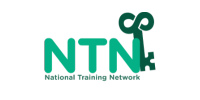Proven Methodologies
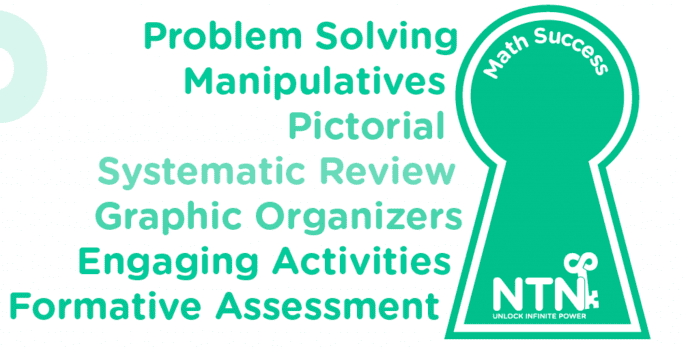
The on-going professional development includes a variety of best teaching practices that embrace the key shifts in mathematics. These practices are researched based and focused on increasing student performance, productivity, and engagement.
Borko (2004) establishes that professional development including an explicit focus on the subject matter can help teachers develop powerful understandings. To foster students’ conceptual understanding, teachers must have rich and flexible knowledge of the subjects they teach. In particular, they must understand the central facts and concepts of the discipline, how these ideas are connected, and the processes used to establish new knowledge and determine the validity of claims (Anderson, 1989; Ball, 1990; Borko & Puthnam, 1996)
In addition teachers must have sustained professional development so they will be able to provide students with the critical foundations of middle school mathematics that will promote student confidence in their mathematics abilities and encourage positive self-beliefs, which can in turn help students to be more successful.
The instructional strategies promoted through NTN’s professional development builds mathematical concepts and connections through best practices utilizing the following seven proven methodologies:
SOLVE Methodology Explanation
with Brian Enright
“Problem solving means engaging in a task for which the solution method is not known in advance. In order to find a solution, students must draw on their knowledge, and through this process, they will often develop new mathematical understandings. Solving problems is not only a goal of learning mathematics, but also a major means of doing so.” (NCTM, 2000, p. 52) Problem solving gives students a context to help them make sense out of the mathematics they are learning.
The National Council of Teachers of Mathematics (NCTM, 1980 and 1989) has recommended that mathematics curriculum be organized around problem solving, focusing on:
- Developing skills and the ability to apply these skills to unfamiliar situations
- Gathering, organizing, interpreting and communicating information
- Formulating key questions, analyzing and conceptualizing problems, defining problems and goals, discovering patterns and similarities, seeking out appropriate data, experimenting, transferring skills and strategies to new situations
- Developing curiosity, confidence and open-mindedness
A problem-solving methodology can provide a means for students to construct their own ideas about mathematics and to take responsibility for their own learning. Students benefit when there is an environment in which they are exposed to teaching via problem solving, as opposed to more traditional models of teaching about problem solving. The challenge for teachers, at all levels, is to develop the process of mathematical thinking alongside the knowledge.
Mathematical discourse and problem solving are critical elements in the mathematical learning process. When students are actively engaged in learning practices such explaining problem solving-strategies, and communicating about the strategies of others, student engagement increases and achievement is positively impacted. Mathematical education research describes the contrast between those students who are engaged in problem solving and mathematical discussion and those who memorize formulas and procedures. Studies show that students engaged in problem solving and discourse learn calculation proficiency through the problem solving and are more prepared to transfer the knowledge acquisition to other problem solving situations (Boaler & Staples, 2008).
According to research, one of the major themes of mathematical problem solving is “teaching students to think” (Wilson, J., Fernandez, M., & Hadaway, H., 1993). Students at all levels are capable of success with problem solving when provided support such as multi-modal curriculum design, consistent routine and teacher scaffolds for problem solving (Lambert and Sugita, 2017). With the goal of teaching students “how to think” instead of “what to think” or “what to do”, National Training Network has developed a problem solving cycle, SOLVE, that provides access for all students.
Successful students learn multiple means of representations, engagement and strategies to apply to cognitively demanding tasks (Lambert & Stylianou, 2013). SOLVE provides multiple access points for students by encouraging students to use their own words and pictures to represent the problem, providing options for independent, partner and group problem-solving , encouraging students to use self-selected strategies and providing opportunities to communicate about mathematical thinking.
S — Study the Problem
The student engages with the problem by reading, recognizing, and rewriting the question.
O — Organize the Facts
The student engages with the problem by identifying and interpreting information to support the selection of relevant facts.
L — Line Up a Plan
The student engages with the problem by analyzing the question and relevant facts to select or formulate a strategy and design a solution.
V — Verify Your Plan with Action
The student engages with the problem by estimating the solution using mental math and developing a solution by relating the facts from the problem to the plan they devised.
E — Examine Your Results
The student engages with the problem to evaluate and justify the solution.
- Does it make sense? Students support their solution by referencing the question.
- Is it reasonable? Students compare their solution to the estimate.
- Is it accurate? Students defend their solution by choosing a strategy to assess accuracy.
The student composes a sentence that will summarize their solution to the problem.
“Looking back” or examining your results may be the most important element in the problem solving cycle (Wilson, J., Fernandez, M., & Hadaway, H., 1993). Reflective practice needs to be modeled and reinforced as an essential part of the problem-solving pathway. With SOLVE students consistently look at the relationship between the question, the mathematical information, the strategy or strategies, the solution and the support for the solution. Reflection and examination of the results empowers students to be confident as they are able to justify the solution, not just “get the answer”.
“Mathematically proficient students check their answers to problems using a different method, and they continually ask themselves, “Does this make sense?” They can understand the approaches of others to solving complex problems and identify correspondences between different approaches” (Common Core Standards Initiative, 2010, p.6).
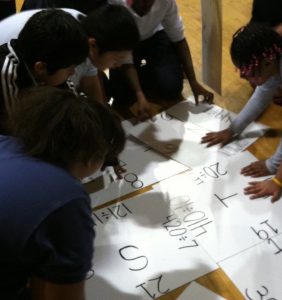
- “The very act of generating a concrete representation establishes “image” of the knowledge in students’ minds.” (Marzano, page 78)
- “Inductive instructional techniques require students to first discover the principles from which hypotheses are generated.” (Marzano, 105)
- Teaching students through the use of concrete manipulations, pictorial representations, then abstract numerals, is called the “concrete to representational to abstract sequence of instruction” (CRA). Teaching students through the three learning stages in CRA has shown to benefit secondary students in math acquisition (Witzel, 2005; Witzel, Mercer, and Miller, 2003).
- The development of math skills is positively impacted when students participate in concrete level activities leading to the discovery of grade-level mathematical concepts (Butler, et al. 2001). Through this process, they develop mathematical understanding while exploring ways of verbally expressing their discoveries. Student success with use of manipulatives is related to the teachers experience and expertise with the manipulatives.
- Using manipulatives helps students make the connection from the concrete to the abstract which makes information more accessible to all students (Devlin, 2000; Maccini & Gagnon, 2000)
- Research based studies show that students who use concrete materials develop more precise and more comprehensive mental representations, often show more motivation and on task behavior, understand mathematical ideas, and better apply these ideas to life situations (Harrison & Harrison, 1986).
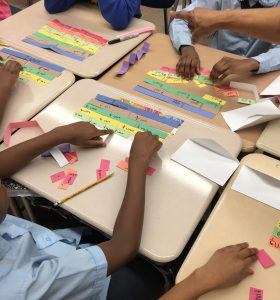
- “Drawing pictures or pictographs (i.e. symbolic pictures) to represent knowledge is a powerful way to generate nonlinguistic representations in the mind. “ (Marzano, page 84)
- When teachers help students generate nonlinguistic representations, however, the effects on achievement are strong. It has even been shown that explicitly engaging students in the creation of nonlinguistic representations stimulates and increases activity in the brain (see Gerlic & Jausovec, 1999).” (Marzano, 73)
- The uses of multiple representations have been strongly connected with the complex process of learning in mathematics, and more particularly, with the seeking of the students’ better understanding of important mathematical concepts. Research done by Hiebert and Carpenter, (1992); Kaput, (1989a); and Skemp, (1987) illustrates that multiple representations of concepts can be utilized as a help for students in order to develop deeper, and more flexible understandings (Porzio, 1994).
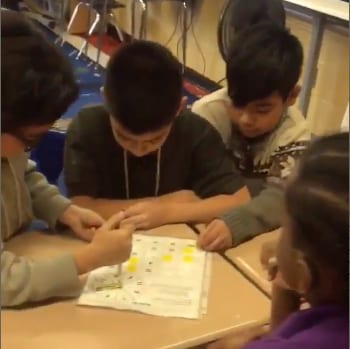
- “Once students initially take notes, teacher’s should encourage them to continually add to the notes and revise them as their understanding of content deepens and sharpens” (Marzano,p.44)
- Graphic organizers are perhaps the most common way to help students generate nonlinguistic representations.” (Marzano, p. 75)
- A review of the research from 1980-1991 (Hudson, Lignugaris-Kraft, & Miller, 1993) concludes that visual displays can be successfully implemented at several phases of the instructional cycle.
- Graphic organizers can successfully improve learning when there is a substantive instructional context such as explicit instruction incorporating teacher modeling and independent practice with feedback (Boyle & Weishaar, 1997)
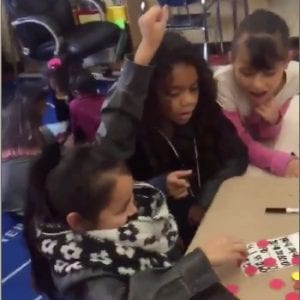
- The advantages of using games in a mathematical program have been summarized in an article by Davies (1995) who researched the literature available at the time. Increased learning – in comparison to more formal activities, greater learning can occur through games due to the increased interaction between children, opportunities to test intuitive ideas and problem-solving strategies
- Games and activities often provide more practice than traditional worksheets. In addition, these types of engaging activities can help student’s process ideas that may be difficult to develop in other ways. (Ex: sorting shapes, angles) (Hatch, 2005)
- Math activities and games providing students practice with skills; giving students ways to apply mathematical ideas to problem-solving situations and develop strategic thinking. (Burns, 2003)
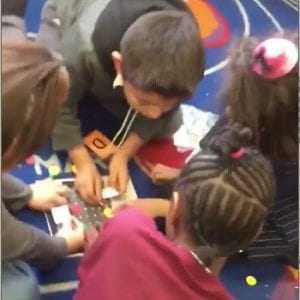
- Formative assessment can be highly effective in “raising the level of student attainment, increasing equity of student outcomes, and improving students’ ability to learn.” In effective formative assessment, teachers make frequent and interactive assessments in order to adjust teaching to meet student needs and to help students reach high standards. (OECD, 2005)
- Teachers can use formative assessment to produce feedback that is relevant and informative using good data about how students are progressing. This formative feedback helps teachers to review, reflect and take action to support student learning. Formative assessment supports understanding of where learners are in their learning, where they are going and what needs to be done to get them there (Nicol and Macfarlane-Dick, 2006)
- Teachers implement student progress monitor with four steps. The teacher determines the current performance level on skills, identifies year end achievement goals, and establishes a rate of progress. The measure of meeting these goals is brief and easily administered measurements, which may be daily, weekly, biweekly, or based on a unit. These measurements sample the range of year-long skills. (Safer and Fleischman, 2005)
- When teachers use systematic progress monitoring to track their students’ progress, they are better able to identify students in need of additional or different forms of instruction, they design stronger instructional programs, and their students achieve better. (Fuchs and Fuchs, 2002)
- There is a wide range of research that supports the use of student progress monitoring. Studies show that students learn more, teacher decision making improves, and students become more conscious of their own academic performance. (Good & Jefferson, 1998).
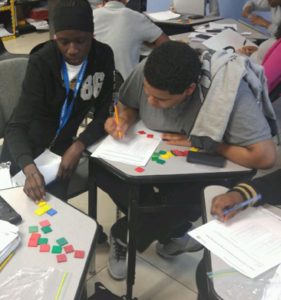
- Mastery requires focused practice over days or weeks. After only four practice sessions students reach a halfway point to mastery. It takes more than 24 more practice sessions before students reach 80 percent mastery. And this practice must occur over a span of days or weeks, and cannot be rushed (Newell & Rosenbloom, 1981).
- Individualized assignments that tap into students’ existing skills or interests can be motivating. At the elementary school level, homework can help students develop study skills and habits and can keep families informed about their child’s learning. (Research Spotlight on Learning)
- Thus, creating learning conditions in class for successful formative and guided practice, and checking student readiness for successful independent practice (homework) on the complex tasks within the assignment is crucial. If the assignment is not doable for them, they will get discouraged and shut down. They just won’t run to practice an area of ‘no talent’. (Kannold, 2011)
Anderson, C. W. (1989). The role of education in the academic disciplines in teacher education. In A. Woolforlk (Ed.), Research perspectives on the graduate preparation of teachers (pp. 88-107). Englewood Cliffs, NJ: Prentice Hall.
Ball, D. L. (1990). The mathematical understanding that prospective teachers bring to teacher education. The Elementary School Journal, 90, 449-466.
Boaler, J. & Staples, M. (2008). Creating mathematical futures through an equitable teaching approach: The case of Railside School. The Teachers College Record, 110(3), 608-645.
Borasi, R., & Fonzi, J. (2002). Foundations: Professional development that supports school mathematics reform [Vol. 3]. Arlington, VA: National Science Foundation.
Borko, H. (2004). Professional development and teacher learning: Mapping the terrain. Educational Researcher, 33, 3−15.
Borko, H., & Putnam, R. (1996). Learning to teach. In D. Berliner & R. Calfee (Eds.), Handbook of educational psychology (pp. 673-708). New York: Macmillan.
Boyle, J. R., & Weishaar, M. (1997). The effects of expert-generated versus student- generated cognitive organizers on the reading comprehension of students with learning disabilities. Learning Disabilities Research & Practice, 12(4), 228-235.
Burns, M. (2003) Using math games in your teaching. Connect, November-December 2003. Retrieved September 22, 2011 from synergylearning.org
Butler, F.M. Kit-hung Lee, Miller, S. P. & Pierce, T. (2001). Teaching mathematics to students with mild-to-moderate mental retardation: A review of the literature. Mental Retardation, 39, 1: 20–31.
Clarke, D. (1994). Ten key principles from research for the professional development of mathematics teachers. In D.B. Aichele & A.F. Coxford (Eds.), Professional development for teachers of mathematics: 1994 yearbook, (pp.37-48). Reston, VA: National Council of Teachers of Mathematics.
Cohen, D.K., & Hill, H.C. (1998). Instructional policy and classroom performance: The mathematics reform in California. Philadelphia, PA: Consortium for Policy Research in Education.
Darling-Hammond, L., & McLaughlin, M.W. (1995). Policies that support professional development in an era of reform. Phi Delta Kappan, 76(8), 597-604.
Devlin, K. (2000). Finding your inner mathematician. The Chronicle of Higher Education, 46, B5.
DuFour, R. (May, 2004). Schools as learning communities: What is a professional learning community? Educational Leadership, 61:8, 6-11.
Formative Assessment: Improving Learning in Secondary Classrooms. Policy Brief OECD Observer (November 2005): 1-8.
Fuchs, L. S., & Fuchs, D. (2002). What is scientifically-based research on progress monitoring? (Technical report). Nashville, TN: Vanderbilt University.
Garret, M.S., Porter, A.C., Desimone, L., Birman, P.F., & Yoon, K.S. (2001). What makes professional development effective? Results from a national sample of teachers. American Educational Research Journal, 38(4), 915-945.
Good, R., & Jefferson, G. (1998). Contemporary perspectives on curriculum-based measurement validity. In M. R. Shinn (Ed.), Advanced applications of curriculum-based measurement (pp. 61–88). New York: Guilford Press.
Harrison, M., Harrison, B. (1986). Developing numeration concepts and skills. Arithmetic Teacher, 33, 18–21.
Hatch, (2005) Using Games in the Classroom. This article is taken from the introduction to “Geometry Games”, a photocopiable resource published by The Association of Teachers of Mathematics http://nrich.maths.org/2928
Hudson, P., Lignugaris-Kraft, B., & Miller, T. Using content enhancements to improve the performance of adolescents with learning disabilities in content classes. Learning Disabilities Research & Practice, 8 (2), 106-126.
Kannold, T. (2005) Turning vision into action http://tkanold.blogspot.com/2011/08/let-homework-rules-begin-part-ii.html
Lambert, R. & Stylianou, D. (2013). Posing cognitively demanding tasks to all students. Mathematics Teaching the Middle School. 18(8).
Lambert, R. & Sugita, T. (2016). Increasing engagement of students with learning disabilities in mathematical problem-solving and discussion. Support for Learning, 31(4), 347-366. doe:10.1111/1467-9604.12142
Marzano, R., Pickering, D., Pollock, J. (2001). Classroom instruction that works: Research-based strategies for increasing student achievement. Alexandria, VA: ACSD
National Council of Teachers of Mathematics (NCTM) (1980). An Agenda for Action: Recommendations for School Mathematics of the 1980s. Reston, Virginia: National Council of Teachers of Mathematics.
National Council of Teachers of Mathematics (NCTM) (1989). Curriculum and Evaluation Standards for School Mathematics. Reston, Virginia: National Council of Teachers of Mathematics.
National Council of Teachers of Mathematics. (2000). Principles and standards for school mathematics. Reston, VA: National Council of Teachers of Mathematics.
National Governors Association Center for Best Practices, & Council of Chief State School Officers. (2010). Common Core State Standards for mathematics: Standards for Mathematical Practice
Newell A, Rosenbloom P. S. (1981). Mechanisms of skill acquisition and the law of practice. In: Anderson J R (ed.) Cognitive Skills and their Acquisition. Erlbaum, Hillsdale, NJ, pp. 1-51.
Nicol, David J. & Macfarlane-Dick, Debra (2006); Formative assessment and self-regulated learning: a model and seven principles of good feedback practice. Students in High Education, 31:2, 199-218.
Office of Educational Research and Improvement. (1999). National awards program for model professional development. Washington, DC: U.S. Department of Education.
Porzio, D. T. (1994). The effects of differing technological approaches to calculus on students’ use and understanding of multiple representations when solving problems. Dissertation Abstracts International, 55(10), 3128A. (University Microfilms No. AAI 9505274).
Research Spotlight on Homework. http://www.nea.org/tools/16938.htm. Retrieved 9/22/2011 NEA Reviews of the Research on Best Practices in Education.
Safer, N. and Fleischman, S. (2005). Research matters: how student progress monitoring improves instruction. Educational Leadership – How Schools Improve, 62, 81-83.
Thompson, C.L., & Zeuli, J.S. (1999). The frame and the tapestry: Standards-based reform and professional development. In L. Darling-Hammond & G. Sykes (Eds.), Teaching as the learning profession: Handbook of policy and practice (pp. 341-375). San Francisco, CA: Jossey-Bass Publishers.
Wilson, J., Fernandez, M., & Hadaway, N. (1993) Mathematical problem solving. Retrieved from University of Georgia, Department of Mathematics Education EMAT 4600/6600 Website: http://jwilson.coe.uga.edu/emt725/PSsyn/PSsyn.html
Witzel, B.S. (2005). Using CRA to teach algebra to students with math difficulties in inclusive settings. Learning Disabilities: A Contemporary Journal, 3(2), 53-64.
Witzel, B. S., Mercer, C. D., & Miller, M. D. (2003). Teaching algebra to students with learning difficulties: An investigation of an explicit instruction model. Learning Disabilities Research and Practice, 18, 121-131.
